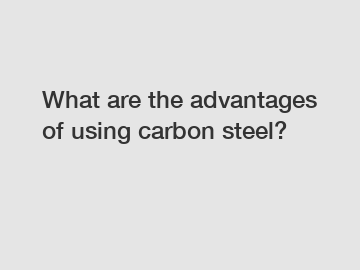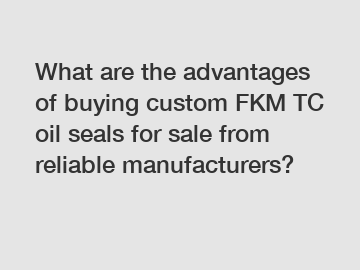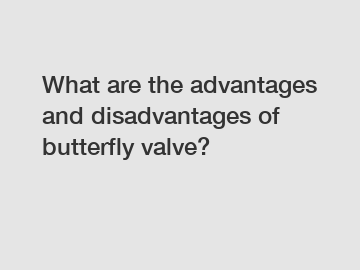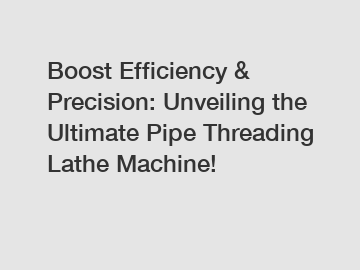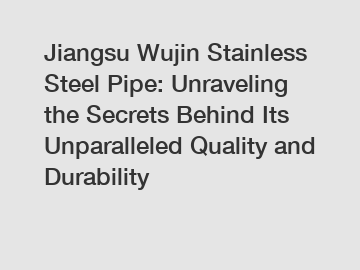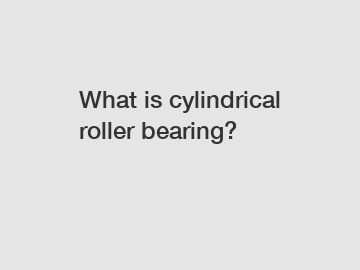What is the difference of gear manufacturing process?
What is the difference of gear manufacturing process?
Gear Manufacturing Process & Machine Compression
-02-08 16:33:58
Are you interested in learning more about forged gear blanks manufacturing? Contact us today to secure an expert consultation!
There are two kinds of gear manufacturing process, forging and casting.
Forged gears are generally parts made by heating steel to austenite, then applying pressure with a die, and forge it with external force. Castings have defects such as segregation, shrinkage and looseness. Taking gear forgings as an example, the fluidity of the metal is retained after the steel passes through the forging, which can significantly improve the mechanical properties of metal materials.
Differences of gear manufacturing process
- Firstly, the mechanical properties are different. After the secondary processing of the forging, there will be a hardening process. This process will cause the arrangement to be fine and the mechanical properties are non-directional, which is better than the casting.
- Second, the difference in gear forming process methods. Casting process for gear is melted in the melting furnace, and then poured into the model, and then cooled. The gear forging process is repeatedly formed by the forging press under the effect of pressure.
- Gear casting: It is composed of direct casting of molten steel, the grain size is poor, the metal density is slightly low, and the mechanical properties are not stable.\
- Gear forgings: After casting, it is formed by high temperature forging, with fine grain size, slightly higher density, and stable mechanical properties.
- Investigation from the non-machined appearance: The castings are small grains, and the seams (casting molds and lids) can be seen; free forging, the appearance is black after casting, the appearance is called flakes, and the casting folds can be seen. Closed die forging, at first glance, is somewhat similar to castings, but the graininess of the appearance is still delicate and contrasting. And forging is often done in small pieces, large parts are difficult to do.
- Investigation from the machining surface: Cast iron is significantly different from forgings, the appearance of cast iron is not shiny (it will still be shiny after grinding), chippings are chip breaking, and gray cast iron will have powdery chips. The cast steel working surface and the forging processing surface do not think there is a significant difference between them, and both have gloss.
- Gear forgings do not have forming defects such as shrinkage, so mechanical properties are better than castings. The strength of castings is the ease of production and molding. Fine-scaled mechanical properties are not required, and can be molded at one time. Mainly for the differences in molding methods.
Conclusion
From the appearance of the two gear manufacturing process, we can see that the surface of the casting is thick, and there is segregation and shrinkage. But the surface of the gear forging is smooth and shiny, because the gear forging is forged by external force, the casting is solidified.
Ideal Gear Manufacturing Machine Choose
From the introduction above, we can know that forging is better than casting in the gear manufacturing process. So what is the best gear manufacturing machine?
The most used gear manufacturing machine in the past is closed die hot forging hammer, in recent years, the electric screw forging press, as a new type of forging press, is more and more used in gear manufacturing. As it has more advantages than forging hammer.
For general gear, as the meshing teeth are small, the blank is hard to fill the die, so no matter in forging hammer or electric screw forging press, gear ring is forged firstly, and then machining the meshing teeth. However, for some special gear like basin gear forging, as the speed of electric screw forging press is slower than forging hammer, the metal blank can flow slowly and fill the mold, so the electric screw forging press forge the final shape directly, but a forging hammer is hard to shape the meshing teeth as mentioned above.
Thus, since the birth of electric screw forging press, there have been many gear forging manufacturers using electric screw press instead of forging hammer. What's more, paired with robot and other forging assistant machine, the electric screw forging press can accomplish forging automation. Anyang Forging Press can provide electric screw forging press from 250 ton to ton.
Forging larger gear, ring rolling machine is the best choice. Make the gear blank firstly, then machine the final shape. We can also manufacture both vertical and vertical ring rolling machine.
Forging automation turn-key solution is also available. If you are interested in our gear manufacturing machine, please feel free to contact us!
Forging: pros and cons of gear making in
Today we are talking about a very important topic, namely forging. It is a steel manufacturing process that involves the plastic deformation of steel by compression or tension in an open matrix. This is very different from pressing, in which steel is deformed inside a closed mold. In forging, steel is deformed in a free and unconstrained way. This process is used to produce steel parts usually, but not limited to, large sizes and complex shapes, such as shafts, axles, discs and blocks.
The forging process: how it works
Explore more:Troubleshooting Slurry Pump Issues: When and How to Replace Parts
What are the common types of bearings used in electric motors?
API-7K Triplex Mud Pumps Contractor: Satisfying Google Users' FAQs for Superior Pumping Solutions!
What is a CAN Bus Display and how does it work?
Which EPDM Rubber Seal Strip offers the best value for money?
Revolutionize Scientific Instruments: Unleashing the Potential of Investment Casting for High-Performance Components!
What are the advantages of purchasing the 4/3D-HS Slurry Pump for your business?
If you are looking for more details, kindly visit Copper Forging Supplier.
Forging process begins with the preparation of steel, which is heated to a high temperature to make it more malleable. Next, steel is struck by hammers or presses, which deform it into the desired shape. This procedure can be repeated several times until the result is achieved.
Forging allows the production of high quality and resistant steel parts, thanks to its ability to work steel uniformly and to eliminate any defects in the material. Additionally, this process allows you to produce large steel parts that would be difficult or impossible to achieve with other steel machining processes.
Why do you need to choose free forging to stamping in ?
The advantages of forging are many and can be used in various applications. It gives more flexibility in choosing size and shape, because it allows you to produce steel parts with very different shapes and sizes, because you do not use a closed die for deformation. Free forging allows you to produce parts with non-standard or custom features, making it a more flexible choice than stamping.
Free forging is used to produce steel parts with greater structural integrity than stamping. This is due to the fact that the deformation of the material occurs through compression or tension in an open matrix, which reduces the possibility of the formation of defects or inclusions in the material.
Steel parts produced with the free forging process have higher mechanical strength than stamped ones. This is due to the fact that the deformation of the material occurs in a more uniform and controlled way, which gives the part greater resistance to mechanical stress.
Some weaknesses to consider
While forge has several advantages, we also want to point out some weaknesses. The forging process, due to the lack of a closed die, produces steel parts with lower dimensional accuracy than pressing. This makes the process less suitable for producing parts with very tight dimensional tolerances.
In addition, the process is generally more time-consuming than molding, as material deformation occurs through compression or tension in an open die. This can result in longer cycle times and lower production capacity.
When it is convenient to apply forging in complex projects in
The forging technique must be applied in preference to hot pressing in some situations.
It offers greater control over the microstructure of the material and allows for gears with superior mechanical properties, such as strength and hardness. This can be particularly important in high voltage applications or with high quality requirements.
It can be a faster process than hot pressing, especially for small batch or prototype production, as it does not require specific tooling such as molds or dies.
To request a free consultation and understand if forging is suitable for the project, contact us.
Want more information on Forged Blocks? Feel free to contact us.
How many years do bellow seal valves last?
What is a Hydraulic System & How Does It Work?
What are the top 10 ways to assess the quality of ball bearings before making a purchase?
Why does a spring lose its energy when compressed for a long time?
What is the difference between deep groove ball bearing and angular contact ball bearing?
Unlocking the Power of Chromium Carbide Welding Wire: Essential Tips for Superior Welds
What are the different types of hydraulic valves?




